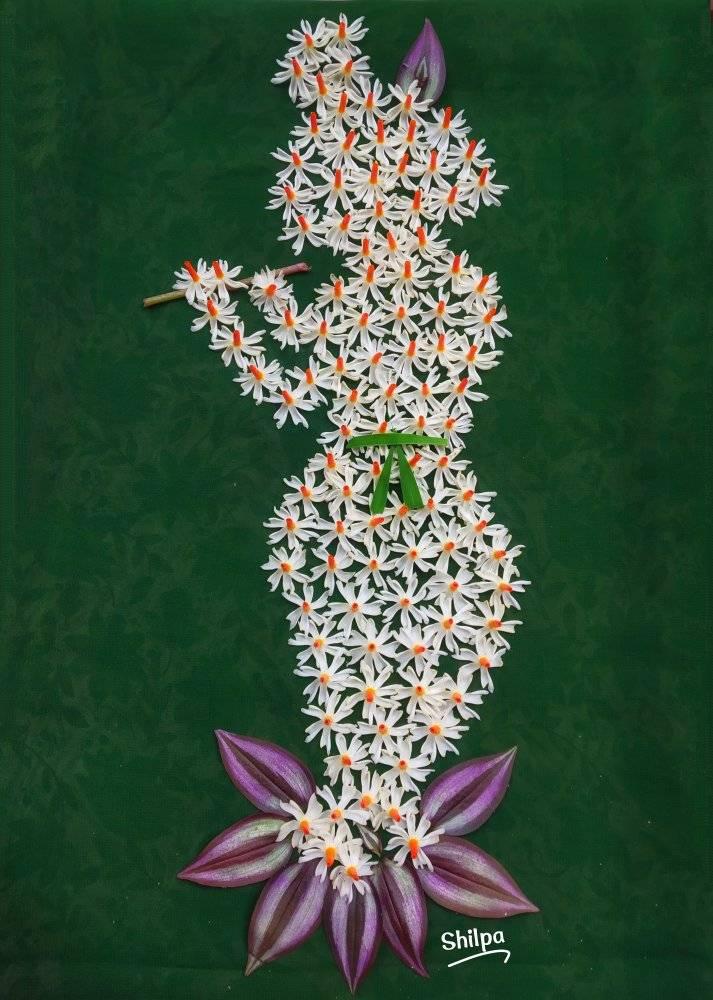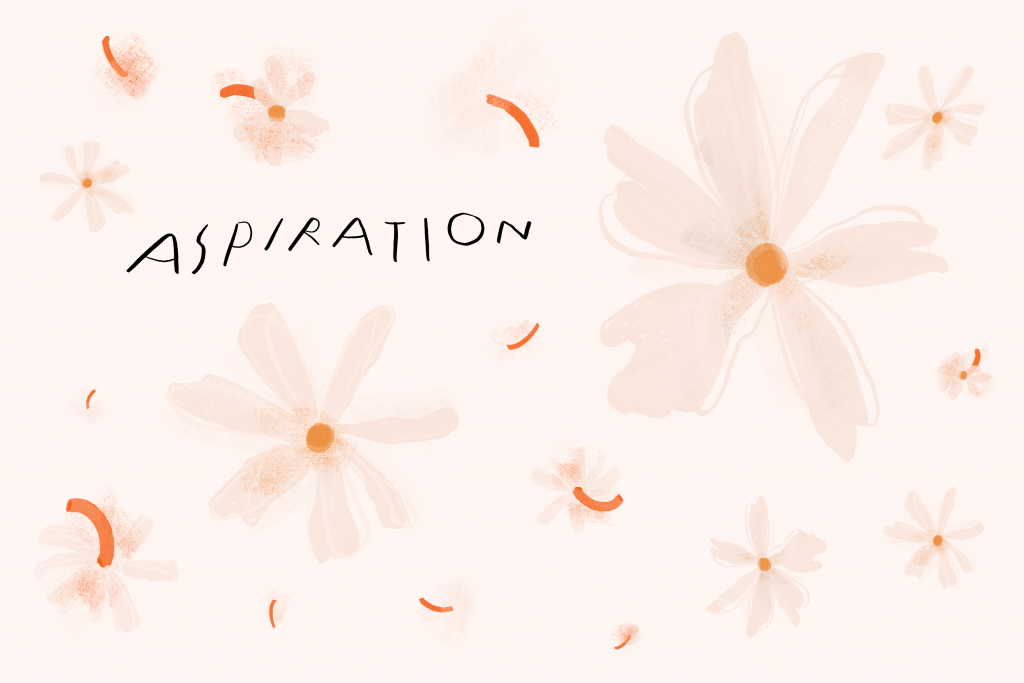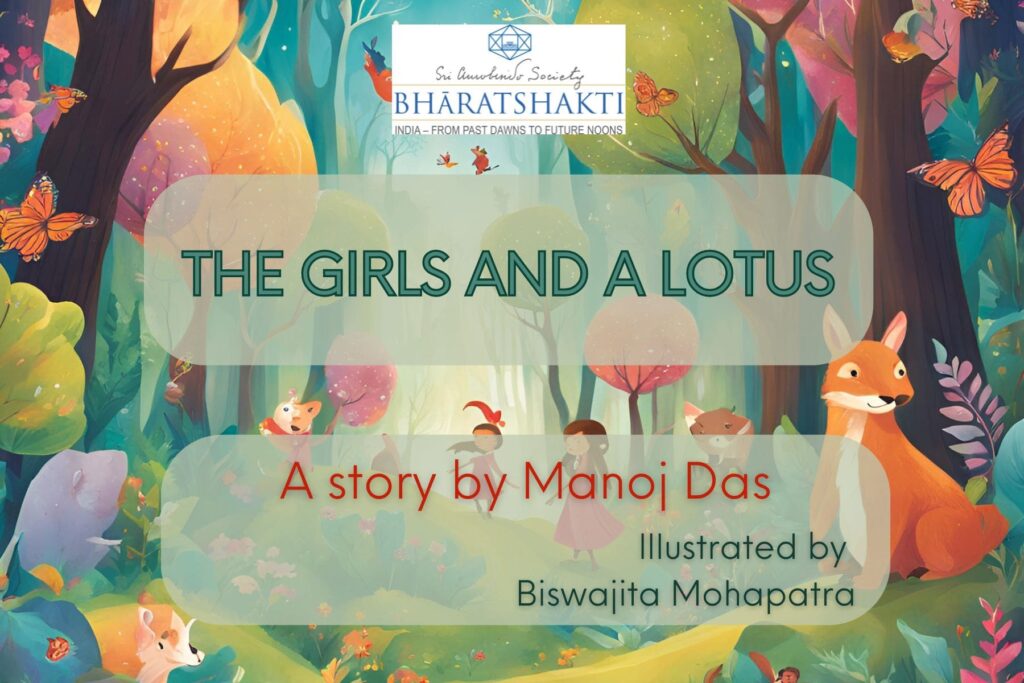Volume II, Issue 7
Author: Sheeba Naaz
Editor’s note: How does the story of Sri Krishna bringing down to earth the heavenly tree of Parijat connect with the spiritual significance of this divinely fragrant flower? Read on!

Parijat (Nyctanthes arbor-tristis) is a night flowering jasmine that is native to only southern and south-eastern Asia. It is a pretty unique tree in the sense it never fruits and its heavenly-fragrant flowers usually drop off as soon as the sun-rays strike them.
Parijat (also written as Pārijat) tree finds special mention in many Hindu scriptures such as the Bhāgavata Purāna, the Mahābhārata and the Vishnu Purāna. This tree is often referred to as one of the Kalpavriksha or Kalpataru, the wish fulfilling trees of divine origin – a belief also common in Jain, Sikh and Buddhist traditions.

Birth of the Parijat
The legends say that Parijat tree emerged during the cosmic churning of the ocean (Samudra Manthan) and along with the divine cow, Kamadhenu reached the paradise of Indra, the king of Gods. So, how did it land up on our Mother Earth? We find the answer in another story which is about Lord Krishna and his two wives, Rukmini and Satyabhama.
One day Devarishi Narada, the sage who frequently travelled between the deva-loka and prithvi-loka and also well-known for churning confusion and chaos, went to Sri Krishna’s palace in Dwarka and offered him a few Parijat flowers. Krishna gave the flowers to Rukmini, his older queen, who was present there.
Not the one to be sitting quiet, the sage then visited the younger queen Satyabhama’s palace. He told her about the heavenly parijat flowers which he had offered to Sri Krishna who then gave them to Queen Rukmini. Envy and rage filled Satyabhama – as Narada suggested that perhaps Rukmini was Krishna’s special favourite.
As if to stoke the fire a bit more, he also planted an idea in Satyabhama’s mind that perhaps she should ask her husband to get her the tree itself so that every day she can have all the fragrant flowers for herself. And informed her where the tree was to be found, in Indra-loka.
Satyabhama put her demand in front of Sri Krishna. Not wanting any disharmony between the two queens, the Lord agreed to bring down the tree for Satyabhama. In the meantime, Narada went to Indra Loka and told Lord Indra that some earthly mortals are bent upon stealing the Kalpavriksha.
One day, Sri Krishna under the pretext of roaming the garden of Indra-loka took a branch from Parijat tree and reached the earth. When Indra came to know about this, he became very angry and cursed that the tree will never bear fruit and the flowers will not stay on the tree after sunrise.
But the story of Parijat and Lord Krishna doesn’t end here.
When Rukmini came to know that Sri Krishna has brought the parijat tree on the earth, she too wanted its flowers for her daily offerings to the Divine. What a fix the husband must have been in! But he was Krishna after all – the Super Diplomat Dwarkadheesh! He planted the tree in Satyabhama’s garden in such a way that the most of the tree’s flowers fell in Rukmini’s garden.
Aspiration, a Psychic Fire Within
Such stories are deeply symbolic, often hiding many truths within, waiting to be revealed.
The Mother, through her psychic vision, saw Parijat as the flower that verily represents “aspiration”. According to her, this veritable aspiration represents the pure and sacred flame of the psychic fire rising from the depths of consciousness. Rukmini was the most devoted of Krishna’s wives and her wishes and aspirations were always laced with surrender and detachment. Perhaps, that’s why she got the blooms to herself while the tree still remained in Satyabhama’s garden.
But there is another important truth in this story. Parijat flower has been given the spiritual significance ‘Aspiration’ by the Mother. Rukmini was an incarnation of Mata Lakshmi or Sri, with her abode in Vaikuntha. And Satyabhama was an incarnation of Mother Earth, Bhu Devi. By planting the parijat tree in Satyabhama’s garden – whose flowers symbolising aspiration will reach the heavenly feet of the Lord when offered by Sri Lakshmi – it is as if an aspiration was planted in the very heart of the earth-consciousness to aspire for a divine life!

Also read a Vedic story: Where is Agni?
Aspiration, which is like an upward rising fire within, is also symbolised by Agni, which in the Veda is the Divine will-force, “the leader on the path”, “the worker established in the man by the gods” (Sri Aurobindo, CWSA, Vol. 15, p. 390).
Sri Aurobindo also explains that like other gods, Agni in the Veda is a child of the universal parents, Heaven and Earth, Mind and Body, Soul and material Nature. In this light also, we see the truth of why the tree of parijat, aspiration, has to be planted in the earth-consciousness from where it will rise through all levels of consciousness. This is the secret of all evolution.
“Aspiration is the dynamic push of your whole nature behind the resolution to reach the Divine.”
~ The Mother, CWM, Vol. 3, p. 168
Sri Aurobindo and the Mother emphasise that an aspiration must be devoid of all ego-centric attitude and only that aspiration takes us to the divine. It now becomes clear why Rukmini gets the parijat blossoms – she didn’t want the flowers for herself but for offering to the divine. It is almost as if she was living a life of complete self-offering and surrender, described by the Mother in these words: “Life must blossom like a flower offering itself to the divine.”
Desire and Aspiration
It is important to understand the difference between a desire laced with selfishness and an aspiration that is laced with selflessness.
A desire insists on being fulfilled because it comes from the ego-self. Aspiration is not the exuberance of the vital or the insistent hungry demand which is the characteristic of a desire. In simpler terms, aspiration can be understood as a purer and higher octave of desire and converts it into something divine and magical, because it comes from a place deep within, which Sri Aurobindo and the Mother speak of as the psychic.

Integral yoga has three basic limbs of sādhana – aspiration, rejection and surrender. Viewed from one angle, aspiration predominates the other two in its value. It is undeniable that if the sadhaka’s aspiration becomes sincere and ardent and all-enveloping, rejection and self-surrender too are bound to follow suit in no time.
Also see: Aspiration and the Psychic Being
True aspiration is a movement of the psychic, which Sri Aurobindo explains in one of his letters, is seated behind the heart, the emotional centre. Interestingly, as per the Tantra Yoga tradition, the kalpavriksha or the wish-fulfilling tree resides is in the centre of a minor chakra called “Hrit” that is located right behind and slightly to the left of Anāhata or the heart chakra.
‘Hrit’ means the heart and is responsible for absorbing the heat from sun-rays also known as prana and help one manifest what one wishes to happen in the world. Also, the heart chakra is connected to our prānamaya kosha or the vital sheath which is connected to our breath, feelings and energy. Let’s not forget that the medical term for breath is indeed “aspiration”. So, every wish is laced with aspiration or breath and this breath is the primordial energy that is the universal life force also known as prāna.
When this prāna is pure and crystal clear with intentions of love and oneness, we can rest be assured that our aspirations are indeed going to be fulfilled. Aspiration with an ego-centric attitude is more often a desire. And as long as desires rule our life, we are bound to face failures one way or another. When selfishness is replaced by selflessness, the hopes, wishes and dreams come true even when the means to achieve them seem impossible.
“To live within, in constant aspiration towards the divine – that renders us capable of regarding life with a smile and remaining in peace whatever the external circumstances.”
~ The Mother, CWM, 14: 232
Read more flower-meditations by the author HERE.
~ Graphic Design: Shahla Sayeed



